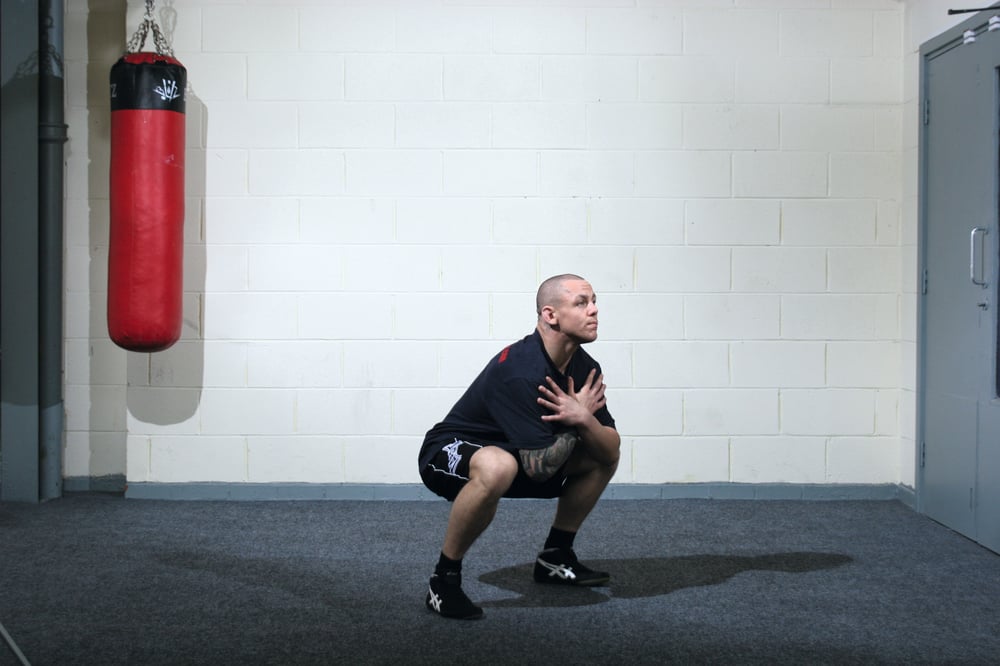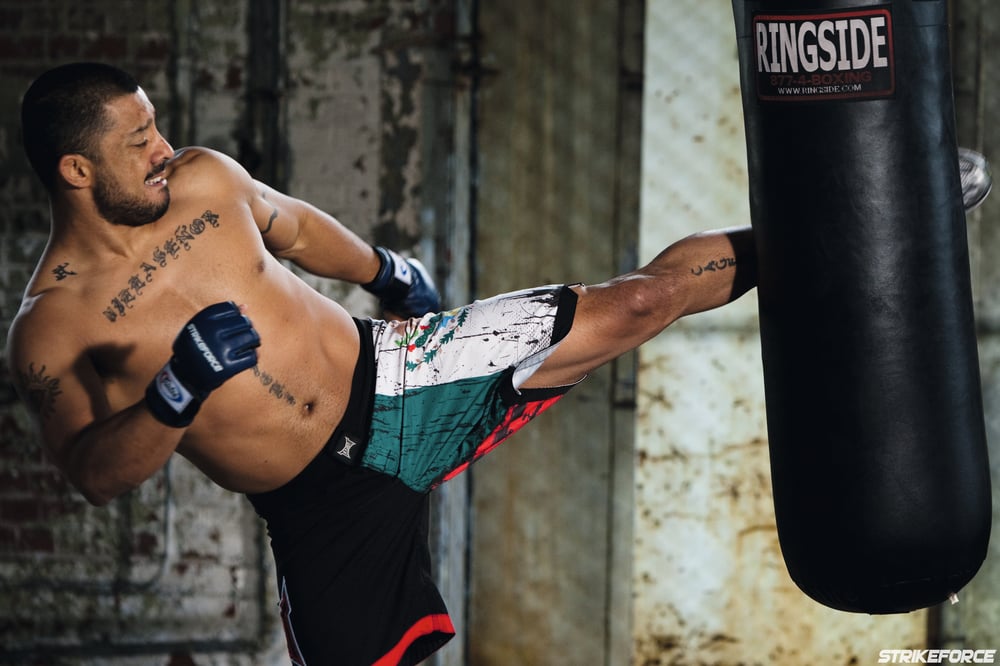
Issue 083
December 2011
Kill fight fatigue with some simple, and gym-less, 15-minute routines that perfectly prepare you for that feared in-cage exhaustion
Barry Gibson
Barry Gibson BSc and MMA-CSCC is the owner/founder of GrappleFit Training, and an S&C coach focusing on combat sports
I’m looking at how you can prepare for a ‘super fight’ with intervals, in this case five-minute rounds. We’re talking strictly conditioning here – power endurance to be precise.
This is the phase where things get a little nasty. A couple of issues back I covered one of the many variations I have of ‘Fight Day’ at my facility, where the combat athletes go through a grueling circuit for 3–5 rounds. This time I’m looking at other options for you. During this phase the body gets very acidic. When your lungs burn and your muscles feel like they’re on fire, that’s when you’re hitting the spot. What you’re going to get is a massive increase in lactate tolerance, where the body becomes more efficient at buffering the waste products away that form when training anaerobically.

Brock Lesnar’s famous ‘Caveman Training’ video uses a similar format, where each round had a theme. For example, round one was a pushing round using spiderman push-ups, power-overs, med ball throws etc. Round two was a pulling round using sled pulls, arm drags and other such movements. I mix things up a little by utilizing a ‘compound’ round system, so I’d use pushing, pulling, leg blasts, fight-specific and cardio-type movements all in the same round. This provides a more realistic feel to the session in that it seems more like a fight. The overall systemic fatigue makes the athlete perceive they are actually in a cage fighting it out. The carryover is much more effective.
I’ve put together a couple of formats, the first one is a body-weight-only one – so there are no excuses to skip this one. I’ve used the term shadow box, but what I mean is fight – throw kicks and sprawls into the mix as well, so you’re getting the full effect. Rest only for 45–60 seconds between rounds and aim for at least three rounds in total.
Next up is a little mixture of exercises. The second routine is a form of density training so you need to go all out and shoot for as many reps as possible. Then, next time try to better your numbers. Rest as needed during the five-minute period (keep them brief) but only give yourself 45–60 seconds between rounds. There are more fight-specific movements in here, but you could always substitute your own too; if you have training partners available you can go for wall wrestling, bad positions on the ground etc.

I always stress the importance of power-endurance protocols in a fighter’s regime, and it’s worth noting again: this, in my opinion, should take the place of the majority of hard sparring. Notice I emphasized the word majority, so before all you purists jump on me through the power of the internet, let me explain. Sparring should be time for technical and tactical aspects of the fight game. I personally know many fighters who like to ‘fight themselves fit,’ not a great idea considering the amount of hits you take during a fight.
Would it not be better to be fitter both in terms of a traditional cardio sense and also at a local muscular level? That way you’re able to glean more from sparring by not having to borrow someone else’s lungs at the halfway point and getting your lips punched off in the process, therefore, getting no fitter and no better? This is only my opinion. Remember I’m not saying sparring is bad, only that it’s not the best way to get fit for fighting. Try these two routines on your conditioning days. I bet you’ll never look back. And implement your own too – these type of circuits will mean you go for the duration of the fight, without the heavy legs and arms, or ‘gassing.’ Enjoy!
Compound Round
Burpees
Squat thrusts
Push-ups
Cat dips
Shadow box
Jump squats
1-2 Sprawl
Burpees
Alternate Squat thrusts
1-2 Sprawl
Fill each 30-sec interval with as much quality work as you can – don’t try to save yourself at all – leave it all here. NO EGOS
Density Training
Round 1
10 squat thrusts followed by 10 push-ups
Alternate between the two exercises for the full five-minute block. Try to record your score for both exercises, then beat it next time.
Round 2
5 pull-ups, 10 cat dips, and 20 squats
Do as many sets as you can in the five-minute block. Again, try to keep score.
Round 3
20 ‘Combo Sprawls’ and 10 heavy-bag kicks each leg
Follow the same format above – as many sets as possible in the five-minute time frame. For combo sprawls, throw a ‘1-2, left hook’ then drop quickly into a sprawl. This should be done as fast as possible.
45–60 secs rest between rounds
...









